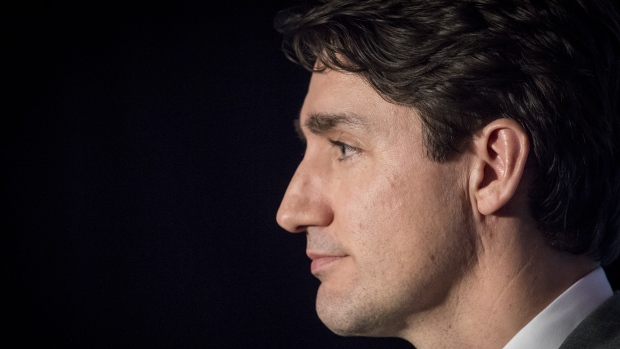May 31, 2018
‘Do the seat count’: Why Trudeau chose Trans Mountain over Energy East

As far as Doug Black is concerned, the reason Prime Minister Justin Trudeau spent billions of taxpayer dollars to keep the Trans Mountain pipeline expansion alive while letting the Energy East pipeline proposal die is simple.
“Just do the seat count,” Black, an elected member of the Canadian Senate representing Alberta, told BNN Bloomberg in a telephone interview from Calgary. “Quebec was opposed to Energy East and at that point in time it just became insurmountable.”
Trudeau’s Liberal Party represents 40 Quebec ridings in the House of Commons. That compares to 17 ridings the party holds in British Columbia.
“For the federal government, the business case [for Energy East] was weaker and the political risk was higher” than it was for Trans Mountain, said Richard Masson, former CEO of the Alberta Petroleum Marketing Commission and now an executive fellow at the University of Calgary’s School of Public Policy, in a telephone interview with BNN Bloomberg.
TransCanada, the company behind the $15.7-billion plan to ship over one million barrels of oil sands bitumen per day from northern Alberta to Canada’s Atlantic coast, cancelled Energy East in October 2017.
Forced to take a billion-dollar charge for the money it had already spent during the three years it pursued the project, TransCanada ultimately blamed the death of Energy East on changes the Trudeau government made to the regulatory review process. Indeed, the National Energy Board must now consider whether any new pipelines will encourage producers to emit more greenhouse gases by expanding production.
- Trudeau's pipeline takeover is a bittersweet win for the oil sands
- Trans Mountain seen drawing pension funds or returning to Kinder Morgan
- Kinder Morgan Canada's share price target cut by CIBC, National after deal with feds
MORE ON TRANS MOUNTAIN
“Because they killed Energy East and because they killed [Enbridge’s proposed] Northern Gateway, they were simply out of options,” said Black. “[Trudeau] was suddenly confronted with the reality of being between a rock and a hard place and [Trans Mountain] was the only option left.”
“Desperate people do desperate things,” Black said.
The possibility of political desperation aside, Masson argues there were legitimate economic reasons for Energy East to be deemed less worthy of government support than Trans Mountain.
“To try and fill up a million-barrel pipeline is not so easy,” Masson said. “So from a need point of view it would have been a bit of a challenge… Energy East had a lot more going for it in a world before oil prices crashed.”
Trans Mountain managed to get all the way through the NEB review process, winning a recommendation for approval in May 2016. The process for Energy East, by comparison, had to be restarted in early 2017 after three NEB panel members removed themselves amid conflict-of-interest allegations.
Opposition to Trans Mountain, while especially high in B.C.’s lower mainland region, is arguably still less intense than resistance to Energy East in Quebec, where nearly 1,000 kilometres of new pipeline would have been required.
In August of 2016, the NEB suspended Energy East hearings in Montreal after a “violent disruption” by protestors. More recently, protestors in Montreal rallied against Trans Mountain despite that project being thousands of kilometres away.

Despite those differences, some still believe Energy East would have been the preferable project.
“I disagree completely with the loss of Energy East,” Frank McKenna, deputy chair of TD Bank, former New Brunswick Premier and a current member of the Alberta government’s market access task force, told BNN Bloomberg on Tuesday.
“[Energy East] was in many ways more virtuous [than Trans Mountain] because it would have displaced about 700,000 barrels per day of foreign oil that is coming in from countries around the globe to fuel our eastern refineries.”
Yet even McKenna understands the rationale to support Trans Mountain and not Energy East.
“I do understand why [Trans Mountain] is an easier project for the government of Canada,” he said. “it is an existing pipeline, it is simply a matter of twinning it, and it is a much smaller route and presently much easier to accomplish.”





